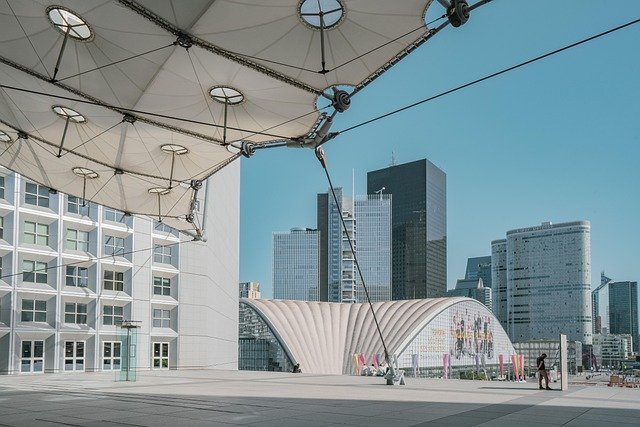Nomadic Architecture Tourism: Discovering Structures That Move
The world of travel continually evolves, creating niches that captivate the imagination of adventurers seeking novel experiences. Among these emerging interests is nomadic architecture tourism—a fascinating exploration of buildings and structures designed to move, transform, or be reassembled across different locations. This unconventional approach to architectural discovery combines cultural immersion with design appreciation, offering travelers a unique lens through which to understand the relationship between human ingenuity, sustainability, and lifestyle adaptation across diverse environments.

Origins of Movable Structures
The concept of transportable architecture dates back thousands of years, beginning with the portable dwellings of nomadic tribes. Mongolian yurts, Bedouin tents, and Native American tipis represent some of the earliest examples of structures designed specifically for mobility. These dwellings weren’t simply practical solutions but sophisticated designs that responded to environmental challenges while embodying cultural values and traditions.
Modern nomadic architecture builds upon these ancient principles but incorporates contemporary materials, technologies, and aesthetic sensibilities. The 1960s witnessed a surge in experimental mobile structures with projects like Archigram’s Walking City and Buckminster Fuller’s geodesic domes challenging conventional notions of permanence in building design. These visionary concepts laid groundwork for today’s transportable architecture movement, which ranges from high-tech transformable pavilions to modular buildings that can be disassembled and reconstructed in new locations.
Contemporary Nomadic Architecture Destinations
Today’s travelers can experience remarkable examples of mobile or relocatable architecture around the globe. The Serpentine Gallery in London commissions a different architect each year to design a temporary pavilion that remains for only a few months before being dismantled and often sold to private collectors. These structures represent cutting-edge design from architects like Frida Escobedo, Bjarke Ingels, and Sou Fujimoto, drawing architecture enthusiasts from worldwide.
The Netherlands has emerged as a hotspot for innovative movable structures, with Rotterdam’s floating pavilions demonstrating climate-adaptive design principles. Amsterdam’s Schoonschip community features floating homes that can be detached and moved to new locations, offering visitors insights into sustainable living solutions for flood-prone regions. Japan provides another fascinating destination with its rich tradition of demountable timber structures like Ise Jingu Shrine, which is ceremonially rebuilt every twenty years using ancient techniques that embody the philosophy of impermanence within permanence.
Planning Your Architectural Tour
Creating a meaningful nomadic architecture itinerary requires research and timing considerations that differ from conventional tourism. Many mobile structures appear temporarily or move between locations, making it essential to verify exhibition dates and accessibility before planning your trip. Architecture festivals like the Venice Biennale, Chicago Architecture Biennial, and Design Miami frequently showcase temporary pavilions and prototype structures worth incorporating into travel plans.
Consider focusing your journey on a specific theme—whether disaster-response shelters, artistic installations, or climate-adaptive housing—to create a coherent experience. Organizations like the Shigeru Ban Foundation offer opportunities to visit humanitarian architecture projects utilizing paper tubes and other lightweight materials for emergency housing. Alternatively, following the work of specific designers known for mobile structures, such as Renzo Piano’s mobile workshops or Studio Orta’s nomadic living modules, can provide structure to architectural explorations across multiple countries.
Cultural Immersion Through Movable Dwellings
Perhaps the most immersive way to experience nomadic architecture is by staying in traditional mobile dwellings adapted for tourism. The steppes of Mongolia offer authentic yurt experiences where travelers can appreciate the ingenious circular design that has sheltered nomadic peoples for centuries. Similarly, desert camps in Morocco and Jordan provide opportunities to experience Bedouin tent living, with structures crafted from goat hair that naturally regulates temperature—cooling during hot days while providing warmth at night.
Beyond traditional forms, contemporary interpretations offer unique accommodation experiences. The NoMad mobile hotel concept deploys luxury prefabricated rooms in remote natural settings, changing locations seasonally. In Finland, mobile sauna culture has spawned floating and towable sauna structures that follow seasonal festivities. These experiences connect travelers not just to innovative design but to the cultural practices and environmental relationships that shaped these architectural solutions.
Sustainability Aspects of Nomadic Architecture
The environmental benefits of movable architecture make it particularly relevant in our climate-conscious era. Nomadic structures typically minimize site impact through reduced foundations, recyclable materials, and adaptability to changing environments. Many contemporary designs incorporate solar panels, rainwater harvesting systems, and passive cooling techniques that demonstrate sustainable living principles while functioning off-grid.
For environmentally conscious travelers, visiting examples like Michael Reynolds’ Earthship Biotecture in New Mexico offers insights into self-sufficient building design that can be replicated globally. Zero-waste construction techniques and circular economy principles are increasingly prominent in mobile architecture, with projects utilizing reclaimed materials that can be repurposed at the end of the structure’s life. This focus on lifecycle impact represents a significant shift in architectural thinking and provides models for more responsible building practices worldwide.
Essential Experiences for Nomadic Architecture Enthusiasts
-
Attend installation days at temporary pavilions to witness the engineering marvels of rapid assembly systems
-
Book guided tours with architects and engineers who specialize in deployable structures to understand technical innovations
-
Visit university architecture departments during thesis exhibition periods when experimental mobile structures are frequently displayed
-
Participate in workshops on traditional nomadic dwelling construction techniques offered in cultural heritage centers
-
Explore architectural salvage warehouses where components from deconstructed temporary buildings often find new homes
-
Document transformation sequences of shape-shifting buildings that respond to environmental conditions or user needs
The appeal of nomadic architecture tourism lies in its dynamic nature—these are not static monuments but living expressions of human adaptability and innovation. By engaging with structures designed for movement, travelers gain fresh perspectives on permanence, place, and our relationship with the built environment. Whether exploring traditional nomadic dwellings that have stood the test of time or cutting-edge deployable structures pushing technological boundaries, this specialized form of architectural tourism offers rich rewards for those willing to seek out buildings that refuse to stay put.





